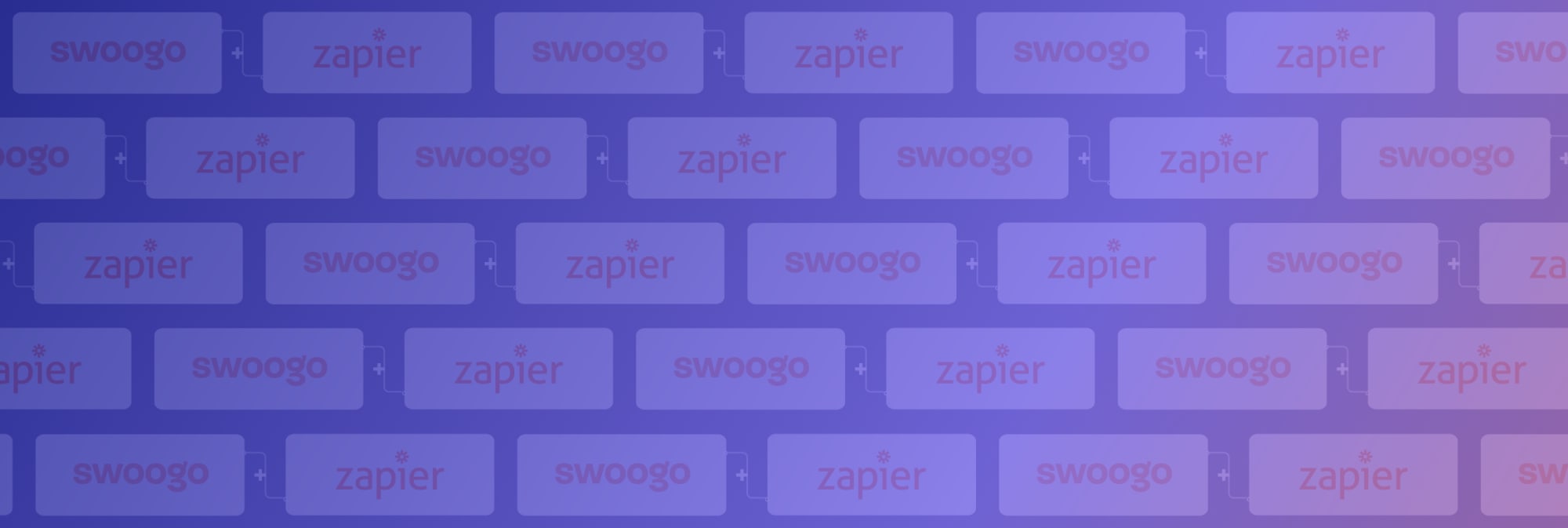For busy event pros and marketers, automation is always the name of the game. That’s why we’re pumped to announce Swoogo’s new native integration with Zapier.
This bi-directional integration now makes it easier than ever to automate your workflows—no coding required. Say hello to hours back in your work day. 🙌
What This Means for You
You can now connect your Swoogo event data with over 6,000 other apps—including Gmail, Eloqua, Asana, Google Sheets, Slack, Mailchimp, and more—to fire automated workflows, streamline repetitive tasks, and save time without batting an eye.
For instance, you can set up actions, or “Zaps,” to automagically:
➜ Ping event staff on Slack when a VIP checks in to your event
➜ Add new registrants immediately to your marketing automation tool
➜ Create a new contact in Swoogo when a Google contact is created
➜ Add new registrants to a Google Sheet
And anything else you can dream up.
No Technical Savvy Required
You don’t need to know a single line of code, which means you can tap into the power of Swoogo’s webhooks or API without having any in-house technical expertise. Zapier's drag-and-drop interface makes it easy for anyone to set up triggers, actions, and searches of your event data.
The Data You Can Sync
Currently, the integration supports the ability to trigger actions based on the Registrant, Contact, and Event objects. When these objects are created, updated, or deleted, they can trigger a Zap. Data on these objects can also flow back into Swoogo.
Ready to set up some workflows? Use one of our pre-built templates with workflows ready to go, or create your own solution and customize to your heart’s content.
Start building your workflows in Zapier →
Automate Your Work
The integration is available for all Swoogo customers, but you will need a Zapier plan to get started. Say goodbye to tedious manual tasks, so you can spend your time on what matters most.
Learn more about using Swoogo with Zapier →
About Swoogo
Swoogo is an industry-leading event management software that provides flexible, customizable solutions for in-person, digital, and hybrid events. With a focus on user-friendly design and powerful integrations, Swoogo empowers event planners to create impactful experiences effortlessly. For more information, visit Swoogo’s website.
About Zapier
As the leader in easy automation, Zapier empowers businesses to automate workflows and move data across 7,000+ apps. Zapier works with what you work with, across your apps and tech stack, so you can make magic happen. For more information, visit Zapier's website.


